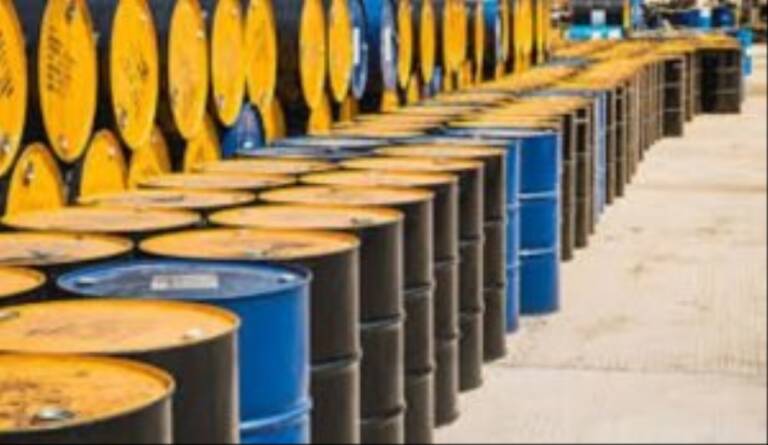China: strong demand for oil and raw materials, despite the crisis

Concerns about China's weakening economy have weighed heavily on many financial and commodity sectors this year. Economic experts have repeatedly warned that China's rapid growth since the global financial crisis is unlikely to be repeated over the next decade, particularly in the real estate and local government investment sectors. We too talked about growth that was below expectations.
Indeed, experts have also warned that China is on the verge of losing its importance in global oil markets and that India will replace it as the main driver of global demand growth.
“China's role as an engine of growth in global oil demand is fading fast,” Emma Richards, senior analyst at London-based Fitch Solutions Ltd, told the Times of India.
But new data from the Middle Kingdom suggests these fears may be overblown, at least for now. Wall Street investment bank Goldman Sachs has been reporting for several months now that Chinese demand for many major commodities has actually been growing " at a rapid pace," thanks in large part to the booming energy sector. clean.
China's imports of energy commodities fell slightly in September compared to the previous month; however, they grew significantly from a year ago with crude oil imports increasing by 14.6%, natural gas by 8.2%, coal by 73.1% and iron ore by 6.7 %. Crude oil imports totaled 11.13 million barrels per day (bpd) in September, down from 12.4 million bpd in August. That said, it's worth noting that imports in August were the third highest of any month on record, so results were bound to be tough. Meanwhile, September imports increased 14% y/y, while arrivals in the first nine months were 11.34 million b/d, up 14.6% y/y.
The only exception among major commodities was copper, where imports of the crude metal fell by 9.5% in the first nine months of the current year compared to the corresponding period last year, thanks mainly to strong domestic production . Copper imports reached 480,426 tonnes in September, down 5.8% from 509,954 in September 2022 but up from 473,330 in August. Raw copper imports for the first nine months of 2023 were 3.99 million tonnes, down 9.5% y/y.
China dominates global clean energy
Meanwhile, China's dominance of global clean energy markets does not appear to pose any imminent danger.
Earlier this year, Bloomberg New Energy Finance (BNEF) reported that as much as $1.1 trillion flowed into the global clean energy sector in 2022. According to the clean energy watchdog, nearly all sectors have received record levels of investment, including renewable energy, energy storage, hydrogen, carbon capture and storage (CCS), electrified transport, electrified heat and sustainable materials spurred by the race to achieve energy security amid Russia's war in Ukraine. BNEF also revealed that China spent $546 billion on renewable energy in 2022, nearly half of total global spending; more than triple the European Union's total spending of $180 billion and the United States' $141 billion.
The trend shows no signs of reversing, with China continuing to dominate clean energy production.
A June report from Global Energy Monitor revealed that the country's operational solar capacity has reached 228 GW, more than that of the rest of the world combined. China is now on track to double its wind and solar capacity a full five years ahead of its 2030 goal.
China has invested over $50 billion in solar panel-wafer production lines, 10 times more than Europe, and also controls a staggering approximately 95% of the world's polysilicon and wafer supply. Last year, the International Energy Agency warned of the dangers the world is exposing itself to by relying so heavily on the Middle Kingdom for its solar needs:
“The world will rely almost completely on China to supply key elements for solar panel production until 2025. This level of concentration in any global supply chain would represent a significant vulnerability,” the agency wrote in a special report .
Furthermore, China's economy is much greener than those of its peers, despite persistent criticism that it is the world's largest polluter.
BNEF revealed that companies listed on the S&P 500 currently derive only about 3.4% of their revenues from clean energy, about half the figure of their peers on the Shanghai Composite Index. In fact, the Asia-Pacific region is home to nearly 700 companies that derive more than half of their revenues from clean energy, which includes renewable and nuclear energy, electrified transportation, biofuels, hydrogen and carbon capture. This compares with just over 400 companies in the United States and slightly more in Europe, the Middle East and Africa combined.
China's top solar companies are enjoying roaring profits driven by strong demand and rising panel sales: Jinko Solar Co. Ltd. (NYSE:JKS) reported a staggering 325% jump in net profit to 3.8 billion yuan for the first half of the current year. year; Longi Green Energy Technology Co. Ltd, the world's largest panel manufacturer, recorded a 42% increase year-on-year

Thanks to our Telegram channel you can stay updated on the publication of new Economic Scenarios articles.
The article China: strong demand for oil and raw materials, despite the crisis comes from Economic Scenarios .
This is a machine translation of a post published on Scenari Economici at the URL https://scenarieconomici.it/cina-forte-domanda-di-petrolio-e-materie-prime-nonostante-la-crisi/ on Fri, 20 Oct 2023 16:00:52 +0000.
